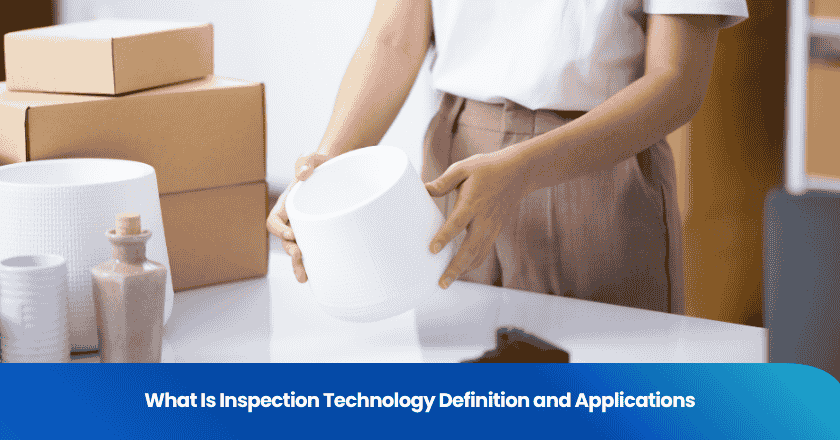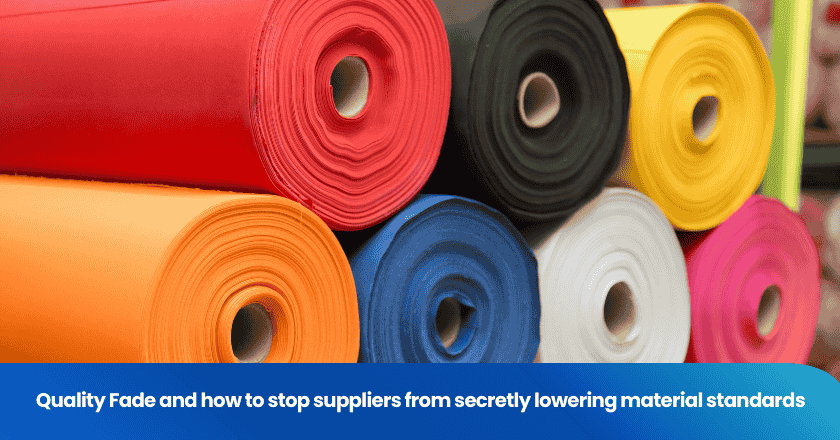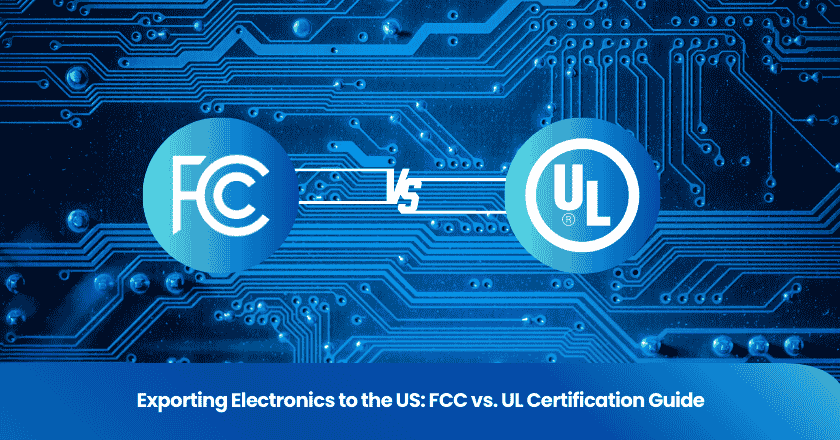
Inspection technology refers to the tools and systems you use to examine products, processes, or environments to identify defects, ensure compliance, and uphold safety standards. You rely on inspection to meet strict regulatory standards and guarantee product quality. The adoption of inspection technologies in sectors like manufacturing, food, and IT continues to increase due to higher demands for reliability and safety. AI-powered inspection improves defect detection and compliance through predictive analytics and automation.
You see inspection play a vital role in protecting consumers and maintaining industry standards.
Inspection Technologies Overview
Definition
You encounter inspection technologies in many industries. These systems help you examine products, processes, or environments to find defects and confirm compliance. Inspection technologies use advanced tools, sensors, and software to automate and improve the inspection process. You rely on these solutions to maintain high standards of quality and safety. Inspection covers everything from visual checks to automated analysis using artificial intelligence. You see inspection technologies used in manufacturing, healthcare, construction, and agriculture. These technologies support you in meeting regulatory requirements and protecting consumers.
Key Principles
Inspection technologies operate on several core principles. You need to understand these principles to appreciate how inspection works across different sectors. The following table outlines the main principles that guide inspection technologies:
| Principle | Description |
|---|---|
| Image Acquisition and Lighting | Captures images of products using optic lenses, requiring adequate lighting for high-resolution images. |
| Image Processing | Analyzes captured images by separating them into pixels for discrepancy detection. |
| Feature Extraction and Pattern Recognition | Identifies specific features to determine if a product meets inspection criteria. |
| Defect Detection and Decision Making | Uses AI to identify defects and make pass/fail decisions based on discrepancies. |
| Integration and Feedback | Employs machine learning to adapt processes and improve outcomes over time. |
You see image acquisition and lighting as the foundation for accurate inspection. Image processing allows you to detect discrepancies at the pixel level. Feature extraction and pattern recognition help you determine if products meet inspection standards. Defect detection and decision making use AI to improve reliability. Integration and feedback enable continuous improvement in inspection outcomes. You benefit from these principles because they make inspection technologies more effective and adaptable.
Tip: Understanding these principles helps you select the right inspection technologies for your specific needs.
Types of Inspection Technologies
Inspection technologies fall into two main categories: manual and automated approaches. You use these systems to maintain quality, safety, and compliance across industries. The following table highlights the differences between manual and automated inspection methods:
| Category | Manual Approach | Automated Approach |
|---|---|---|
| Inspection Criteria | Subjective, varies by inspector | Well-defined, consistent criteria |
| Performance | Variable, affected by human factors | Predictable, consistent performance |
| Speed | Slower, limited by human capabilities | High-speed, real-time processing |
| Cost | Higher labor costs, potential for errors | Lower long-term costs, reduced labor requirements |
| Adaptability | Limited, requires retraining for new criteria | Highly adaptable, can learn from variations |
| Accuracy | Prone to human error, less reliable | High accuracy, reduces false rejects |
| Scalability | Difficult to scale with increased production | Easily scalable to handle variations in production |
You see manual visual inspection as a traditional method, relying on human judgment and experience. Automated inspection uses advanced technologies to deliver consistent results and improve efficiency.
Visual Inspection
Visual inspection serves as the foundation for quality control in many industries. You use visual inspection methods to identify surface irregularities and visible defects. This process often acts as the first line of defense before more advanced testing. You rely on visual inspection equipment such as magnifying glasses, borescopes, and cameras to examine products and components. Visual inspection tools help you detect cracks, scratches, discoloration, and other issues that may affect product integrity.
You encounter visual inspection in manufacturing. In manufacturing, you use manual visual inspection to check for defects on assembly lines. Visual inspection equipment provides clarity and contrast, making it easier for you to spot problems early.
Note: Visual inspection is cost-effective and versatile, but it is limited to surface defects and can be affected by lighting conditions. You may face challenges of manual inspections, such as subjectivity and fatigue, which can impact accuracy.
You use visual inspection tools to maintain safety and reliability. Visual inspection equipment supports your efforts in quality control and non-destructive testing.
Automated Inspection
Automated inspection transforms how you manage quality and safety in industrial manufacturing. You deploy automated visual inspection systems to achieve high-speed, real-time defect detection. These systems use cameras, sensors, and AI algorithms to analyze products on production lines. Automated inspection reduces labor costs, minimizes errors, and delivers consistent results.
You find automated inspection prevalent in industries such as food and beverage, pulp and paper, consumer packaged goods, automotive manufacturing, electronics, medical devices, and pharmaceuticals. Automated visual inspection equipment enables you to inspect thousands of items per hour, ensuring manufacturing quality and compliance.
- The global inspection robots market is projected to grow at a CAGR of 13.9% from 2025 to 2035.
- China leads with a growth rate of 18.8%, followed by India at 17.4% and France at 14.6%.
- 80% of manufacturers who adopted automation reported improvements in operational efficiency.
- Benefits include fewer errors, faster production, reduced downtime, better resource utilization, and more consistent output.
You use automated visual inspection to embed quality control within your operations. Automated inspection systems provide objective data, helping you make informed decisions and prevent costly recalls.
Machine and Quality Inspection
Machine inspection and quality inspection represent advanced approaches to defect detection and quality assurance. You use machine inspection systems equipped with robotics, AI, and machine vision to automate the inspection process. These technologies allow you to identify defects with high accuracy and speed.
Quality inspection combines both manual and automated methods to ensure products meet established standards. You rely on advanced cameras, imaging systems, and inspection software integrated with AI to analyze products and processes. Machine inspection delivers consistent performance without fatigue, while quality inspection ensures compliance in regulated industries.
- Machine inspection involves automated systems that utilize advanced technologies for defect detection.
- Quality inspection encompasses both automated and manual methods to ensure product standards are met.
- Key technologies in machine inspection include robotics, AI, and machine vision.
- Key technologies in quality inspection include advanced cameras, imaging systems, and inspection software integrated with AI.
You benefit from inspection technologies that deliver reliable defect detection, improve manufacturing quality, and support continuous improvement. You use visual inspection equipment and automated systems to maintain high standards and adapt to evolving industry requirements.
Industrial Inspection Applications
Manufacturing
You rely on industrial inspection to maintain quality control and safety in manufacturing environments. Automated visual inspection systems help you detect defects and ensure products meet strict standards. For example, you can use connected inspection systems to create a digital audit trail, which supports regulatory compliance and helps resolve disputes or recalls. AI-powered inspection technologies achieve detection rates above 99%, outperforming traditional methods and reducing human error. You see these systems improve efficiency by allowing inspectors to focus on higher-value tasks.
Inspection Process and Benefits
Inspection Process Steps
You follow a structured inspection process to ensure quality and safety in every industry. The inspection process begins with raw material inspection, where you check materials for quality and compliance before use. You then move to the initial processing stage, inspecting for dimensional accuracy and material defects. During critical production, you conduct inspections before and after significant changes. Post-assembly inspection ensures all parts work as intended. Pre-packaging inspection checks that products meet standards before packaging. The final product inspection confirms everything is ready for shipping.
You adapt the inspection process to fit your industry, but these steps remain the foundation for effective quality control and maintenance.
Advantages
You gain many advantages by using inspection technologies throughout the inspection process. Drones keep workers safe by removing them from hazardous environments. You collect data quickly and accurately, which helps you comply with safety standards. Robotic inspections improve efficiency by adjusting automatically to inspection targets and calculating data without extra setup. Robots detect anomalies that humans might miss, allowing you to act early. You also see significant cost savings and better operational efficiency. The chart below shows the impact of inspection technology on cost savings, efficiency, and defect reduction:
You can reduce production bug-related rework by 21,700 hours and save $381,000 from fewer production defects. Test administration productivity savings reach $1.2 million, and you see a 204% ROI with a payback period of just 14 months. Defect resolution efficiency improves by 40%, and first-time fix rates increase by 60%. You also experience a 35% decrease in defect escape rates and 50% better team collaboration. Six Sigma projects show defect reductions of 50-90% within 18 months, with annual savings between $150,000 and $300,000.
Challenges
You face several challenges when implementing the inspection process in industrial settings. Predictive maintenance cultural barriers affect 55-70% of organizations and often go underestimated. Data quality problems impact 60-75% of cases, leading to false predictions and reduced credibility. Skills gap issues delay value realization and cause poor decisions in 65-80% of organizations. Integration barriers create siloed operations and manual workarounds for 70-85% of companies. ROI justification, scalability problems, and resistance to change also present obstacles. The table below summarizes these challenges:
| Challenge | Prevalence (%) | Impact Description | Resolution Time (Months) |
|---|---|---|---|
| Predictive maintenance cultural barriers | 55-70 | Underestimated challenge affecting implementations | N/A |
| Data Quality Problems | 60-75 | False predictions undermining credibility | 6-12 |
| Skills Gap Issues | 65-80 | Delayed value realization, poor decisions | 8-16 |
| Integration Barriers | 70-85 | Siloed operations, manual workarounds | 3-9 |
| ROI Justification | 50-65 | Budget constraints, project delays | 2-4 |
| Scalability Problems | 45-60 | Pilot success without enterprise value | 5-10 |
You may also encounter resistance to change, lack of leadership support, inadequate training, poor communication, and inconsistent processes. Integrating AI with human expertise can help you overcome low recall rates and improve the inspection process, especially in time-sensitive situations. You achieve better results by combining technology with skilled professionals.
Future of Inspection Technologies
Trends
You see the inspection industry evolving rapidly as new demands and technologies emerge. The market for inspection technology is set to grow significantly, driven by sectors like utilities, construction, and agriculture. Organizations now focus on asset visibility, compliance readiness, and strategic maintenance planning to boost operational efficiency.
You notice that companies assess vendors based on how well they align with internal governance protocols. Compliance with cross-border data transfer rules has become essential. You also prioritize support for secure integrations with existing systems, such as ERP, EAM, and GIS platforms. The semiconductor inspection segment reflects this trend, with values expected to double over the next decade.
Innovations
You benefit from a wave of innovations that transform inspection processes. Drone photogrammetry allows you to capture high-resolution imagery and spatial data safely, reducing inspection times from days to hours and lowering accident rates by up to 91%. IoT and smart sensors provide continuous streams of health data, enabling you to detect anomalies early and plan maintenance proactively. AI and machine learning help you flag defects and prioritize repairs, improving your data management capabilities. Digital twins create dynamic virtual replicas, letting you track assets in real time and enhance maintenance planning. Cloud-based platforms centralize your inspection data and automate reporting, streamlining your workflow.
You can expect inspection technologies to keep advancing, making your operations safer, faster, and more reliable.
You recognize inspection as essential for maintaining product quality and safety standards. You benefit from understanding the main types of inspection, including pre-production, in-process, and final stages. Staying informed about inspection trends, such as automation and AI, helps you adapt to regulatory changes and improve efficiency. You gain a competitive edge by integrating digital sensors and real-time analytics into your inspection process. For deeper insight, you can explore resources on remote visual inspection, 3D measurement, and innovations in non-destructive testing.
Consider collaborating with industry experts and planning strategically to optimize your inspection technology adoption.
FAQ
What is the main purpose of inspection technology?
You use inspection technology to detect defects, ensure compliance, and maintain safety standards. This technology helps you improve product quality and reduce risks in your operations.
How does automated inspection differ from manual inspection?
Automated inspection uses machines, sensors, and AI to check products quickly and accurately. Manual inspection relies on human judgment and can be slower or less consistent.
What are the key benefits of using inspection technology?
Inspection technology increases efficiency, reduces errors, and lowers costs. You gain better data for decision-making and improve compliance with industry regulations.
Can inspection technology adapt to new regulations or standards?
You can update inspection systems with new criteria or software. This flexibility helps you stay compliant as regulations change or as your quality requirements evolve.
Grow your business with TradeAider Service
Click the button below to directly enter the TradeAider Service System. The simple steps from booking and payment to receiving reports are easy to operate.



